When to Collet, How to Germinate and Sow These Popular Natives
Harvesting seeds from coneflowers is a practice that not only saves money but also promotes biodiversity in your garden. This guide explores the best techniques for collecting, storing, and sowing coneflower seeds, enabling you to cultivate thriving, locally-adapted plants while supporting pollinators and enhancing your garden’s ecological value.
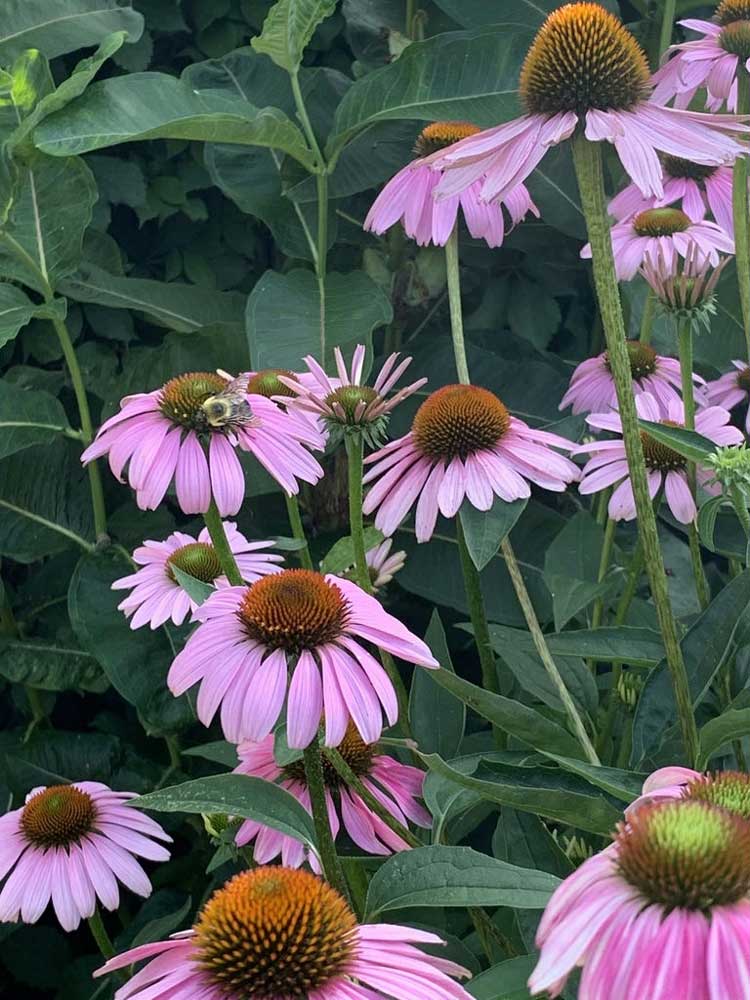
The Role of Coneflowers in Pollinator Support
Coneflowers (Echinacea spp.) play a vital role in supporting pollinators, making them an excellent choice for wildlife-friendly gardens. These native North American plants attract a diverse array of beneficial insects, including bumblebees, honeybees, butterflies, and even hummingbirds. The flowers’ structure, with a prominent central cone surrounded by colorful ray petals, provides easy access to nectar and pollen for various pollinators, including a wide variety of butterfly species, like monarchs, painted ladies, and swallowtails. Notably, coneflowers serve as host plants for the larvae of some specialist butterfly species, such as the Silvery Checkerspot. As with all native plants, the benefits extend beyond pollinators to include a number of positive outcomes, including healthier local ecosystems and reduced water and maintenance needs.

It’s worth noting that not all coneflower varieties are equally beneficial to pollinators. While straight species like Echinacea purpurea are generally the most attractive to insects, some cultivars, particularly those with double flowers, offer reduced ecological value. However the Mt. Cuba Center’s extensive trials have shown that certain cultivars, such as ‘Fragrant Angel’, can be nearly as effective as straight species in attracting pollinators. When selecting coneflowers for a pollinator garden, prioritizing native species and then looking to well-researched cultivars can maximize the ecological benefits while still providing aesthetic appeal.
Harvesting Seeds from Coneflowers
The optimal time to harvest coneflower seeds is when the flowerheads have faded and turned brown, typically two weeks after blooming. Look for seed heads where petals have fallen off, leaving behind the spiky center with fully formed, dark brown seeds. To collect seeds, use sharp scissors or pruners to cut the seed heads, leaving a few inches of stem intact. You may want to wear gloves to protect your hands.
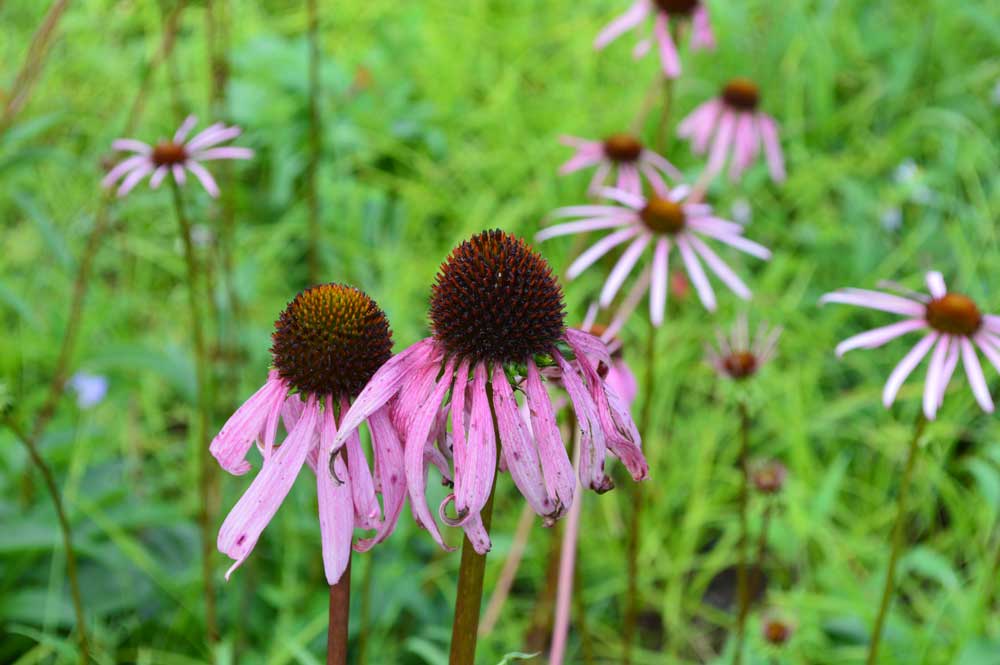
Key Tips
- Avoid harvesting seeds from hybrid varieties, as they may not produce true-to-type plants.
- Leave some wilted flowerheads intact to support local pollinators and promote better seed production.
- Use the “paper bag” method for effortless collection: tie a paper bag around the seedhead and hang it upside down in a dry, dark place.
- Gently separate seeds from chaff after collection to ensure high-quality seeds for storage and sowing.
Storing Coneflower Seeds
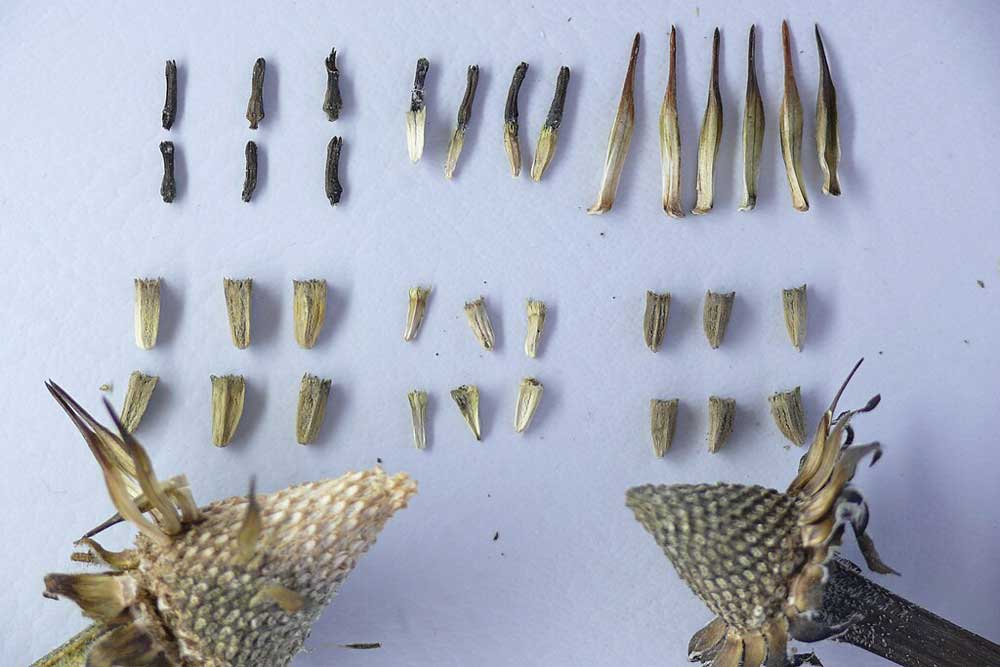
Proper storage is crucial for maintaining seed viability. Store harvested coneflower seeds in mini envelopes or small paper packets, clearly labeled with the date and type of seeds. Keep them in a cool, dark place like a cupboard or drawer to prevent moisture and mold growth. Under optimal conditions, coneflower seeds can remain viable for several years, ensuring a continuous supply for future planting seasons.
Key Tips
- Use airtight containers to protect seeds from humidity and pests.
- Maintain a consistent temperature between 32-41°F (0-5°C) for long-term storage.
- Consider adding silica gel packets to absorb excess moisture and prevent fungal growth.
- Rotate stored seeds annually, using older ones first to maintain freshness in your collection.
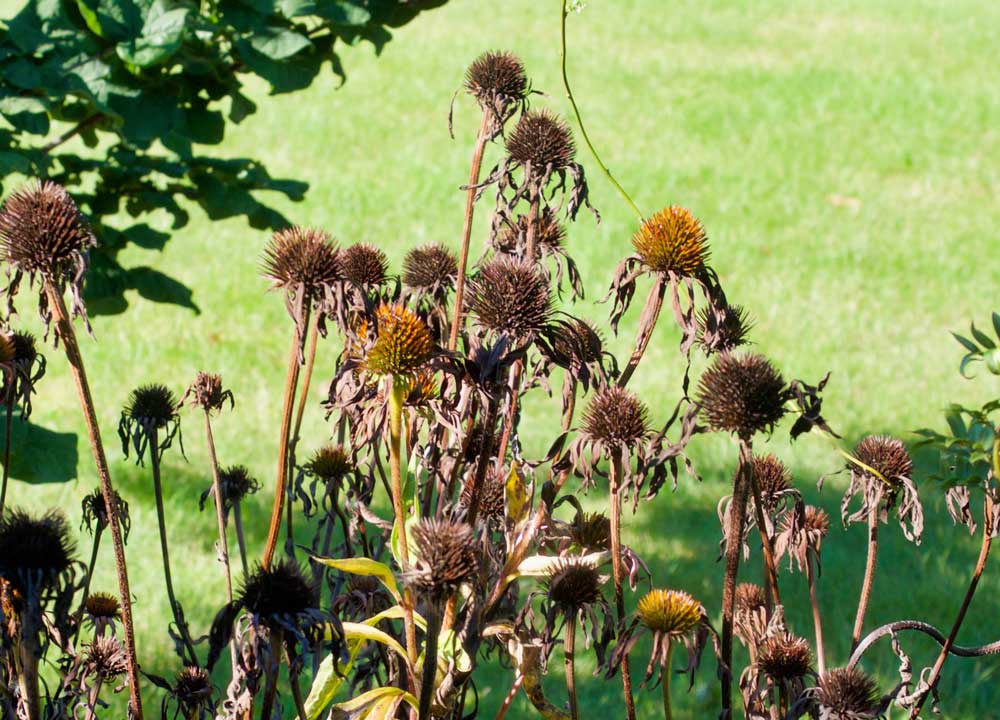
Techniques for Enhancing Seed Germination Rates
Echinacea seeds can have relatively high germination rates, but this largely depends on the specific conditions and treatments applied to the seeds.
Germination Challenges: Despite the potential for high germination rates, Echinacea seeds can sometimes be challenging due to dormancy issues. Techniques such as soaking in water or using growth regulators like gibberellic acid (GA3) and potassium nitrate (KNO3) can help break dormancy and improve germination rates. Additionally, using a high-quality seed starting mix and providing adequate light once seeds sprout are crucial factors.
Some gardeners have found success using heat mats to maintain ideal soil temperatures and LED grow lights to ensure seedlings receive sufficient light. By implementing these techniques, gardeners can significantly boost germination rates, leading to stronger, more abundant coneflower plants that support local biodiversity and pollinators.
Stratification: Echinacea seeds typically benefit from a period of cold stratification, which can significantly enhance germination rates. For instance, Echinacea purpurea can achieve germination rates as high as 98% with cold stratification. Without stratification, the germination rate can still be quite high, around 80-90% for some species.
Temperature and Light: The germination of Echinacea seeds generally occurs best at temperatures between 70-85°F and can take anywhere from 6 to 30 days. Light conditions during germination can also affect success rates, with some studies indicating that Echinacea seeds may need light to germinate effectively.
Seed Source and Treatment: The source of the seeds and whether they have been pre-treated can also impact germination rates. Commercially sourced seeds often have higher germination rates compared to those from public germplasm sources.
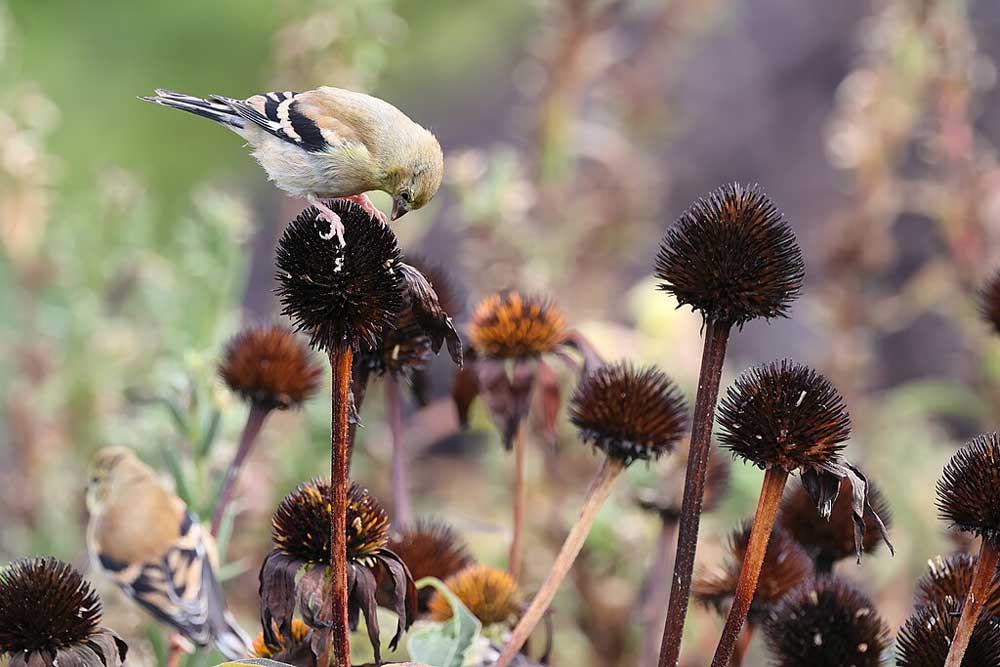
Sowing Echinacea Seeds
As with other seeds collected from native plants, patience and careful preparation usually pay off. Begin by cold stratifying the seeds to enhance germination – soak them for 1-2 hours, then refrigerate in a sealed bag for 8-12 weeks. When ready to plant, use a moist potting soil mix and sow the seeds at a depth of 3-6 mm in pots or directly in flower beds. For indoor starts, harden seedlings before transferring them outside to help them acclimate.
- Maintain consistent moisture and provide indirect sunlight to encourage sprouting.
- Seeds typically germinate within 2-3 weeks under suitable conditions.
- Ensure young plants receive adequate light and water for optimal growth.
- Consider using a heat mat to maintain soil temperature between 65-70°F (18-21°C) for faster germination.
- Thin seedlings when they reach 2-3 inches tall, leaving the strongest plants spaced 18-24 inches apart.
And don’t forget that you can sow coneflower seeds directly into the ground in the late fall and let nature take care of the stratification for you. We suggest doing this right before a large snowfall to discourage the eating of exposed seeds by birds and other wildlife.
Benefits of Seed Saving
Saving coneflower seeds offers numerous advantages beyond cost savings. Plants grown from locally harvested seeds often exhibit stronger adaptations to the specific environmental conditions of your garden, resulting in more resilient and vigorous growth.
This practice also promotes genetic diversity, which is crucial for maintaining healthy plant populations and enhancing their ability to withstand pests and diseases. By cultivating your own seeds, you contribute to the preservation of heirloom varieties and support a more sustainable gardening approach.
- Encourages the development of unique, locally-adapted plant strains
- Helps preserve rare or endangered plant varieties
- Supports pollinator populations by providing a consistent food source
- Enhances the overall biodiversity of your garden ecosystem
